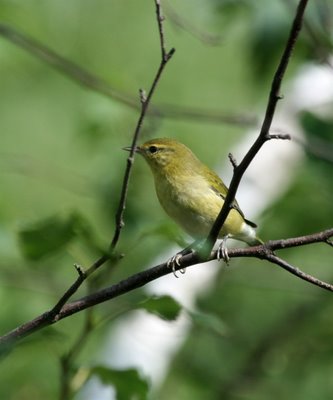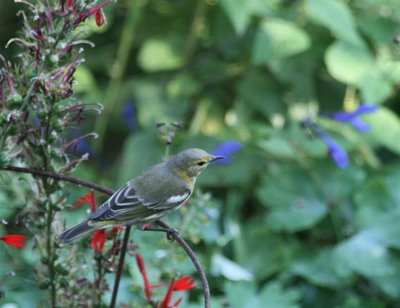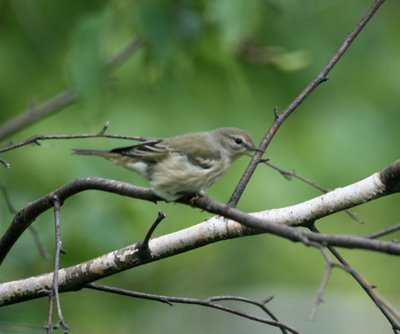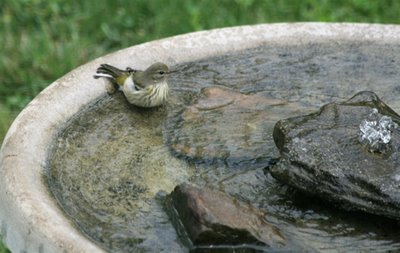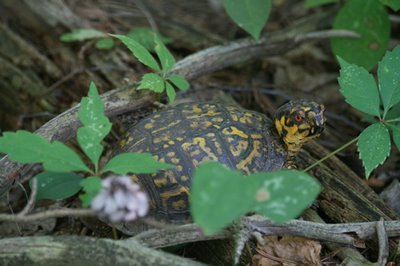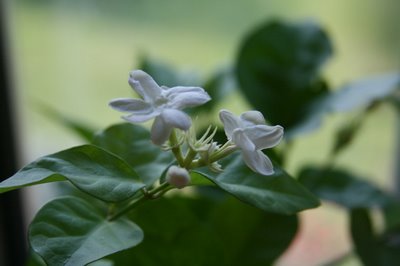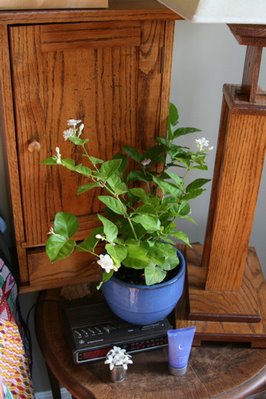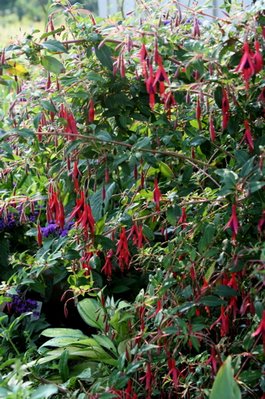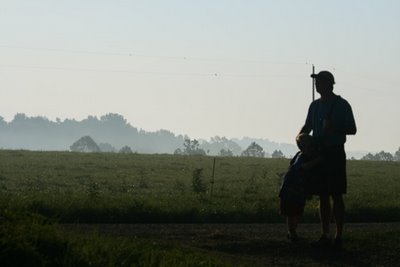Warblers Past
One of the drawbacks of being a blog ant is perpetually living in the past. A minor ancillary risk is confusing those who know that the goldfinches should have changed into winter plumage by now, to name just one anachronism I’ve been busted for lately. And thus this disclaimer. Sometimes beauty comes so thick and fast that I’d have to have a mile-long post to fit it all in. And I’d rather have time to reflect on it than download and post frantically as it happens. I like to write posts when I’m in the mood to write them. It cuts down on the pressure and the feeling that I’m chained to the computer every day. Some days I’d rather paint, walk in the woods or clean the house than write posts.
Ever wish “blog” weren’t such a homely word? Me, too. I always have this faint squirmy embarrassment when I talk about my “blog” or the fact that I’m a “blogger.” I think it’s because it’s a made-up word and it sounds like a wad of something you’d find under your foot. I’d rather be a “poster.” But that sounds like “poser.”
There were so many warblers around in the last couple of weeks of September and the first week of October that I stored up a bunch of images to pull out later, enough for a couple of posts. They’ve moved on, but I haven’t.
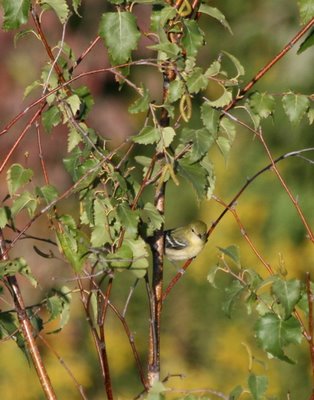 Here's a bay-breasted warbler, a tough call, I know. The even-colored underparts, fairly plain face, lightly-streaked back and plain pale gray feet point toward bay-breast and away from blackpoll.
Here's a bay-breasted warbler, a tough call, I know. The even-colored underparts, fairly plain face, lightly-streaked back and plain pale gray feet point toward bay-breast and away from blackpoll.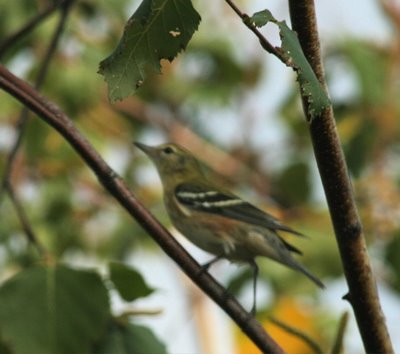
A lousy picture of a bay-breasted warbler, but I wanted to show you the trace of bay on his flank that gave him away, and unequivocally distinguished him from a blackpoll. Cool! You usually don't get that big a hint.
This little black-throated green warbler was inspecting my sickly birch tree for insect damage, and finding plenty. If you watch leaf-gleaning warblers, they invariably head for leaves that have been chewed or curled by insects. Look at the holes in the leaves he's picked out to check.
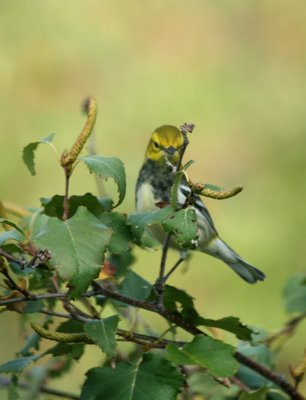 They’re good entomologists and they think like hunters, looking for signs that their prey has passed by. Black-throated green warblers look much the same in fall as they do in spring, but they have white frosting on their black throats.
They’re good entomologists and they think like hunters, looking for signs that their prey has passed by. Black-throated green warblers look much the same in fall as they do in spring, but they have white frosting on their black throats. 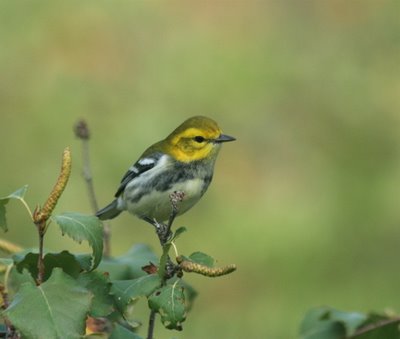 Those pale feather edges will wear off by spring, revealing jet-black bases. I like this shot.
Those pale feather edges will wear off by spring, revealing jet-black bases. I like this shot.A sweet little female Cape May warbler. Hands down, our most common warbler in fall, and one of the rarest in spring. They must take an entirely different route north than south. Just one of the mysteries of bird migration. But man, I’m glad to have them in the fall.
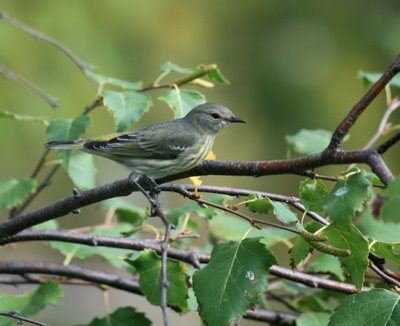 Unremarkable, until you notice the lemon-lime badonkadonk and heavy streaking all the way down the belly. Here ends our little fall warbler tutorial, a day late and a dollar short.
Unremarkable, until you notice the lemon-lime badonkadonk and heavy streaking all the way down the belly. Here ends our little fall warbler tutorial, a day late and a dollar short.Labels: bay-breasted warbler, black-throated green warbler, blog ant, Cape May warbler

